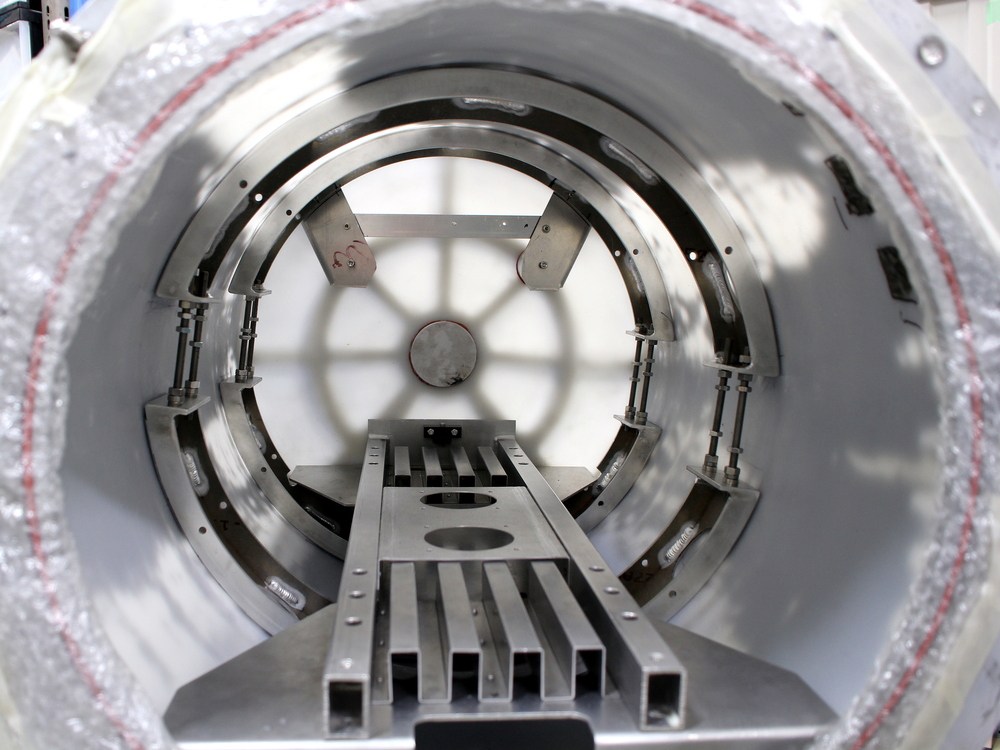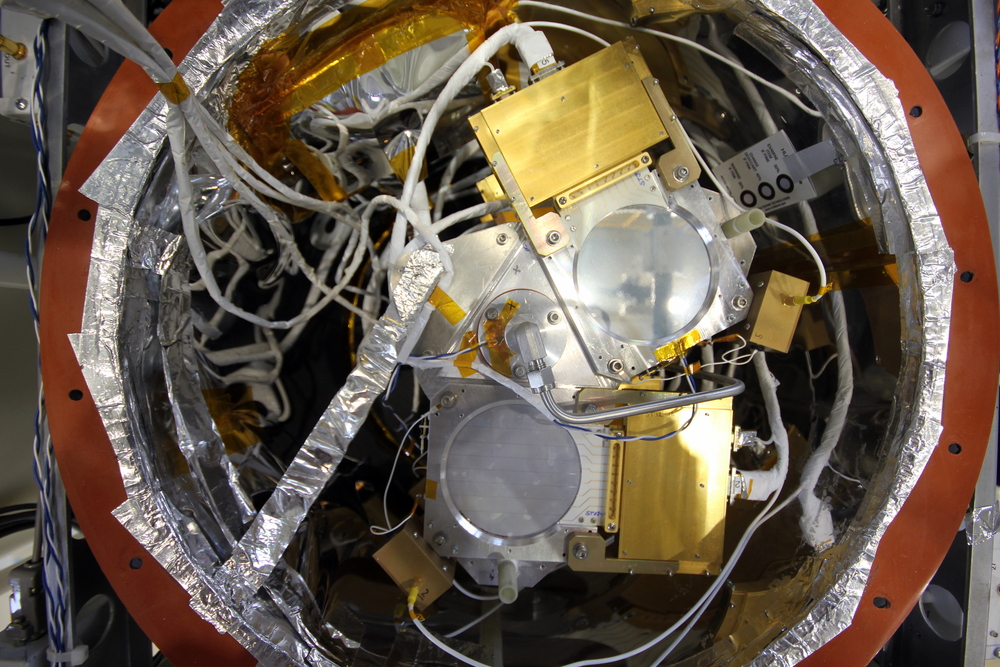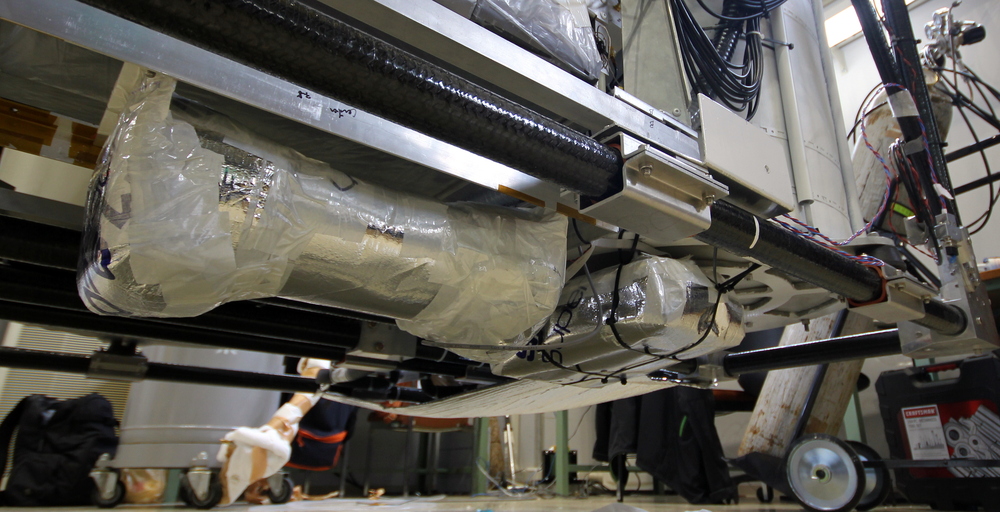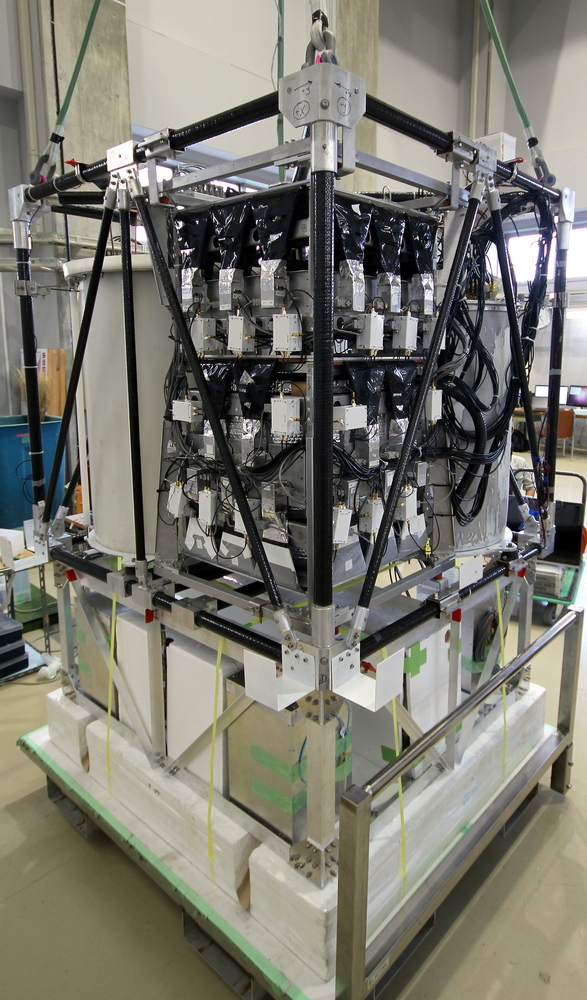The experiment also survived the next trip by truck to Japan’s most northern island Hokkaido without problems. The Taiki base is in operation for balloon flights since 2008 and is located only a 15min walk from the Pacific ocean.

As our thermal vacuum test showed that the pressure vessel needs to be reinforced, two additional internal circular structures were inserted.
 The Si(Li) detectors were mounted and tested by triggering on atmospheric muons, X-rays from an Americium source, and a X-ray tube. All channels showed the same behavior as before in Berkeley.
The Si(Li) detectors were mounted and tested by triggering on atmospheric muons, X-rays from an Americium source, and a X-ray tube. All channels showed the same behavior as before in Berkeley.

The X-ray tube was mounted under the detector stack and carefully adjusted to meet the strict Japanese safety requirements for the operation of radiation producing machines.

The upper gondola structure (with the Carbon fiber frame and the actual experiment) and the lower so-called bus gondola were matched for the first time. The alignment worked very well. This task was followed by an attitude control system test.